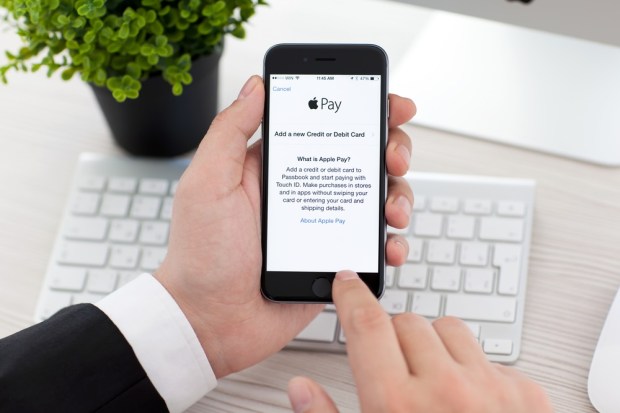The Apple Pay/PayPal Transaction Story

As comes standard in many Apple quarterly earnings report, there was plenty of buzz to go around. The Apple Watch is the most beloved wearable in human history, the iPhone X is the best-selling iPhone on the market and Apple products, broadly, are bringing all of mankind together in love and harmony.
Okay, maybe CEO Tim Cook didn’t say that last part explicitly — it was more of a tonal thing. But Cook did mention the Apple’s forthcoming content partnership with Oprah — the person who has come as close as anyone ever has to bringing all of the people of the world together in love and harmony.
“We’re very excited to work with Oprah. We think that her incomparable ability and talent to connect with audiences around the world, that there’s sort of no match and we think that we can do some great original content together and so we could not be happier in working with Oprah,” Cook told investors.
But the biggest buzz came from Cook when speaking about Apple Pay and its rapid growth last quarter.
Cook called out Apple Pay’s rapidly expanding footprint: 24 global markets, 4,900 banking partners and new retail partnerships with eBay, CVS Pharmacy and 7Eleven. Cook also noted the ongoing boost Apple Pay has gotten from its expanding associations with public transit schemes in 12 metropolitan areas. Apple Pay Cash also got a shout out, with Cook stating that it was adopted by “millions of customers across the U.S. less than eight months following its launch.”
Perhaps the most controversial claim, designed to get a rise out of the mobile payments community, was Cook’s comparison of Apple Pay to PayPal in terms of number of transactions.
“Apple Pay continues to expand, with well over 1 billion transactions last quarter, triple the amount from just a year ago, with growth accelerating from the March quarter. To put that tremendous growth into perspective, this past quarter, we completed more total transactions than great companies like Square and more mobile transactions than PayPal.”
PayPal, in its Q2 earnings reported 2.3 billion transactions, two times that of Apple Pay. Mobile transactions were reported at 36 percent, which comes out to roughly 720 million that quarter.
That suggests that comparing Apple Pay to PayPal mobile, might not be an entirely Apples to apples (pardon the pun) comparison, since Apple Pay and PayPal are very different platforms. As a data point, that might be correct, but in context, it misses the bigger picture of what comparisons are most relevant.
Apple Pay is a mobile payments scheme largely used offline in the physical store, or transit, as Cook pointed out.
PayPal is a digital payments scheme, used to shop online and in app and via a mobile browser with mobile devices. Today, even though mobile is the fastest growing channel for commerce, 80 percent of online volume comes via the desktop/PC channel. There, PayPal is accepted at roughly 70 percent of the largest 1,000 online merchants. Apple Pay is largely invisible in that particular channel.
It would probably make more sense to compare Apple Pay against the cards that consumers use to check out in physical stores. There, based on our latest PYMNTS/Infoscout data, Apple Pay remains at roughly 4 percent of transactions. Approximately 13 percent of eligible users — consumers shopping in stores that accept Apple Pay — have tried it once.
All that said, Cook did note that Apple Pay’s transaction numbers accelerated last quarter, and transit could be that quarter’s big catalyst. It certainly has ignited contactless mobile payments in the U.K., although the jury is out on whether that usage has ignited contactless purchases at retail shops.
On the subscriptions front, Cook noted that paid subscriptions from Apple and third parties have now surpassed $300 million — an increase of more than 60% in the past year alone.
“Revenue from subscriptions accounts for a significant and increasing percentage of our overall services business,” Cook said. “What’s more, the number of apps offering subscriptions also continues to grow.”
As of today, there are around 30,000 apps with subscriptions available in the app store. He also noted that the App Store generated twice the revenue of the Google Play Store, had created tens of millions of jobs for developers all over the world and netted $100 billion in revenue for those developers.
